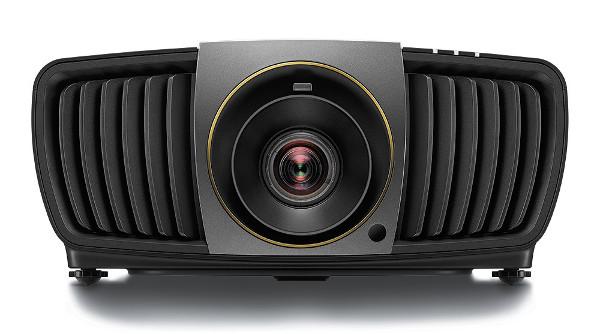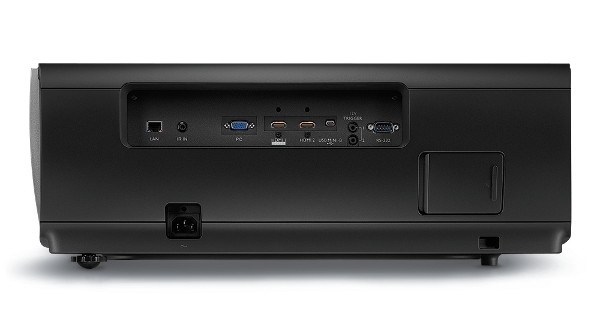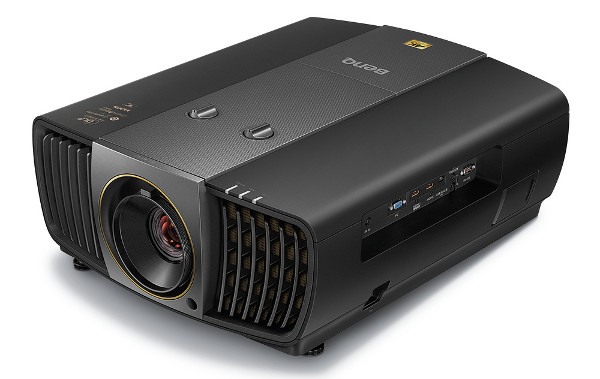Some readers tend to think that reviewers are bias because most products reviewed are fairly highly rated, but speaking as a reader I assume that with so many products in the market reviewers tend to pick the products that will be of most interest to the readers; this being the case I am happy to see that some products are just not worth the price because this recalibrates my expectations for the highly regarded products. Thanks!
BenQ HT9050 4K DLP Projector Review

AT A GLANCE
Plus
Great optics
Accurate color adjustments via CMS
Long-life LED light engine
Minus
Lack of key features
Disappointing contrast performance
No HDR support
THE VERDICT
The BenQ HT9050 has DLP’s latest 4K chip design, but its poor contrast and lack of key features result in an uninspiring package that can't compete with other projectors at or near this price point.
It wasn’t long ago — just 10 years, in fact — that the home projection market was all about DLP. It dominated nearly every price point and was always at the cutting edge of features. But eventually, things changed. Texas Instruments stagnated on DLP development. Meanwhile, new technologies like LCOS emerged, taking onscreen performance to an entirely new level, particularly for native black level and contrast. DLP has stuck around, but it's often found on the budget side of the market, with entry-level home/business designs, or at the opposite end of the spectrum, with cost-no-object three-chip designs.
Recently, however, Texas Instruments delivered a new DLP chip that claims true 4K performance with a feature called XPR. Unlike so-called "native" 4K projectors that deliver all the pixels in a 3840 x 2160 UHD signal to the screen simultaneously, this chip uses a proprietary pixel-shifting method with a micromirror chip offering native resolution of 2716 x 1528, rapidly flashing up two half-frames of diagonally offset pixels to deliver more than the required 8.3 million pixels to the screen. As with other pixel-shifting solutions we've seen, the rapid succession of the two half-frames gives the effect of a single, blended frame. As Texas Instruments and the manufacturers using this chip are quick to point out, its delivery of the more than 8 million discrete pixels meets the Consumer Technology Association's definition of an Ultra HD display. You can read more about the technology (and my first impressions of it on the BenQ HT9050 reviewed here and Optoma's UHD65, a $2,500 budget projector using the same chip) in my recent article, "Is DLP's 4K Chip Really 4K?".
The BenQ HT9050 is among the first projectors to utilize the new chip. At $8,999, it has some stiff competition in the home theater market — including true native 4K models and some impressive 1080p projectors from the likes of JVC and Epson that accept 4K signals and offer pixel shifting to simulate something in between 1080p and 4K. So I was surprised when I saw the specs missing some key features like HDR support and 3D. The HT9050 does boast an LED light engine and full support for the expanded P3 color space, though with some caveats. Let's see if it's got what it takes to compete.
Features
The first thing you notice about the BenQ HT9050 is that it’s a beast of a projector. If physical footprint and mass are any indicator, the HT9050 fits in with the crowd at this price point, with the projector weighing 40 pounds. BenQ says the large chassis provides better thermal cooling and helps to keep fan noise down, which was certainly never an issue in my testing. All the connections are located on the side of the chassis, where you’ll also find some controls located behind a small panel.

The HT9050 has dual HDMI inputs, only one of which offers the version 2.0 spec and HDCP 2.2 support required for 4K/60 signals and playback of copy-protected 4K content. As you'd expect, the projector does provide both horizontal and vertical lens shift, but they’re controlled with two manual knobs located on top of the chassis. That's unusual; projectors at this price typically have powered lens control for not only lens shift but also zoom and focus — one of several premium features I'll cite that were surprisingly absent on the HT9050.
The lens optics are one place you can clearly see where the money goes, however. It's a 14-element design, and I was impressed by the edge-to-edge focus performance and the utter lack of chromatic aberration. As mentioned, focus and zoom are done manually at the lens, which makes dialing in the perfect focus slightly more difficult than with powered lenses, but the zoom ring is cleverly designed to adjust focus simultaneously so that you don’t have to redo focus with any zoom changes. This worked pretty well overall, and I did use the feature occasionally to watch 2.35:1 movies zoomed to fill my 'Scope screen. Since there’s no motorized zoom, lens memories — another feature now seen on many premium projectors — are a no-go. Movie lovers intent on a 2.35:1 screen need to take that into account if this capability is on their short list.
As mentioned, HT9050 uses an LED light engine rather than the more typical bulb-based design. The key advantage here is no expensive lamp replacement, and none of the usual lamp aging that requires periodic recalibration. The engine offers three modes, Normal, Economic, and Smart Economic, and boasts 2,200 lumens of output and 20,000 hours of lifespan. With a 120-inch 16:9 screen, this delivered about 25 foot-lamberts in Economic or Smart Economic mode and 36 ft-L in Normal. That isn’t quite as bright as I was able to achieve with the latest JVC projector at this price point, but it was still plenty of light for the more typical screen sizes on the market.

BenQ advertises a dynamic contrast ratio of 50,000:1 for the HT9050, but my first review sample lacked any sort of dynamic contrast system, whether via any sort of dynamic mechanical iris or circuitry to modulate the LED light output for darker scenes. BenQ later sent a new review unit with updated firmware that did implement a dynamic dimming system for its LED light engine that is activated when the projector's lamp selection is put into Smart ECO mode. This allows the LED lights to dim according to the overall image level, allowing for better black levels. The difference wasn’t dramatic, but welcome. The BenQ uses about a 4x multiplier for their dynamic system, so pumping was rarely noticed, but the LED engine did display a buzzing sound that would come and go with brighter images and objects onscreen. Whether you’d hear this with most movies is debatable though; your distance from the projector and the soundtrack content will both have a role in masking it.
I’ve only had a narrow experience so far with the new 4K DLP chip (limited to this projector and the Optoma UHD65 budget projector mentioned above) so it's hard to know for absolute certain if the HT9050's contrast is being poorly served by the native contrast of the new 4K DLP chip itself. In general, DLP projectors do lack the contrast performance we’ve seen from LCOS models, but this new chip seems to have taken an even farther step back in contrast than the DarkChip 4 designs I reviewed more than five years ago. Putting aside the BenQ's 50,000:1 spec for dynamic contrast ratio, the peak native contrast I measured sequentially (meaning, full screen on for peak brightness, full screen off for black level) with no dynamic contrast circuitry engaged was only 900:1. This was improved by the new firmware update, which allowed for the LED dimming to push that measurement to 4,000:1. But dark images still took on a very washed out appearance compared to nearly any projector I’ve review in recent memory, especially at this price point.
In fact, I don’t recall the last time I reviewed a projector with unassisted native contrast performance this low. ANSI native contrast, which has always been a strength of DLP designs, was better, with an in-room modified measurement of more than 500:1 — fairly high for projector using this method. Still, while this is solid, ANSI contrast as a whole isn’t a very good indicator of onscreen contrast because it’s a measurement of an average picture level that is rarely achieved with movies today. Average picture levels for films hover in the low teens, which is why having a higher sequential contrast delivers such a staggering effect in visual performance.
- Log in or register to post comments





































































